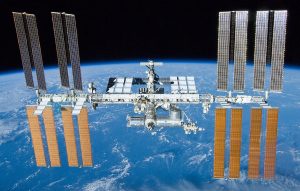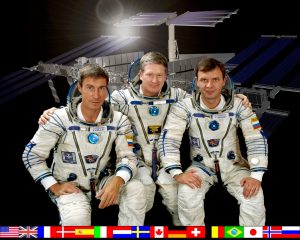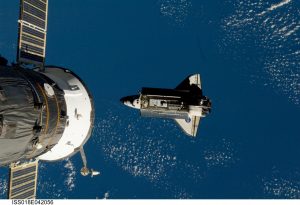 On mornings when I wake up with a backache, the idea of sleeping in a zero gravity chamber sounds appealing, but in reality, living in a zero gravity environment is probably not something I would want to do for very long. While I admit, gravity can put a strain on our bodies in many ways, I don’t think we were really designed to live our whole life without gravity. Nevertheless, living and working in space have become more commonplace than many of us realize. We don’t give much thought to the men and women who live and work in the International Space Station, or in the various crafts that have transported them there over the years.
On mornings when I wake up with a backache, the idea of sleeping in a zero gravity chamber sounds appealing, but in reality, living in a zero gravity environment is probably not something I would want to do for very long. While I admit, gravity can put a strain on our bodies in many ways, I don’t think we were really designed to live our whole life without gravity. Nevertheless, living and working in space have become more commonplace than many of us realize. We don’t give much thought to the men and women who live and work in the International Space Station, or in the various crafts that have transported them there over the years.
It was on November 2, 2000, that the first residential crew would arrive aboard the International Space Station (ISS). The arrival of Expedition 1 was the mark of the beginning of a new era of international cooperation in space and of the longest continuous human habitation in low Earth orbit…and it continues to this day…even without the Space Shuttle’s operation…though I don’t think it is as easy to work out the logistics without the Space Shuttle. Two Russians, Yuri Gidzenko and Sergei Krikalev, accompanied by NASA’s Bill Shepherd, were selected as the crew of Expedition 1.
It was decided that we needed an International Space Station in 1998, and the space agencies of the United States, Russia, Canada, Japan and Europe agreed to cooperate to bring it to pass. Its first components were launched into orbit later that year. In all, there would be five space shuttle flights and two unmanned Russian flights to complete the delivery of many of its core components and partially assemble the space station. It was  a huge project that would possibly accomplish in space, what we had never been able to accomplish on Earth…nations working together on experiments that mattered to all of them to bring about changes in key areas like health, agriculture, energy, and a host of other things. The ISS was truly a first.
a huge project that would possibly accomplish in space, what we had never been able to accomplish on Earth…nations working together on experiments that mattered to all of them to bring about changes in key areas like health, agriculture, energy, and a host of other things. The ISS was truly a first.
The two cosmonauts and the astronaut arrived at the ISS on a Russian Soyuz rocket that had been launched from Kazakhstan. This first mission was tasked mostly with constructing and installing various components and activating others. This was sometimes easier said than done, and in fact, the crew reported that it took over a day to activate one of the station’s food warmers. I hope they weren’t too hungry!! Throughout their time in space, they were visited and resupplied by two unmanned Russian rockets and three space shuttle missions, one of which brought the photovoltaic arrays, giant solar panels, which provide most of the station’s power.
Shepherd, Gidzenko and Krikalev became the first humans to adjust to long-term life in low orbit, circling the Earth roughly 15.5 times a day and exercising at least two hours a day in order to offset the muscle atrophy that occurs in low gravity. This is where I thought relief of backaches for sleeping wrong might have been solved, but it turns out that there were a host of other problems that come for long-term weightlessness. Who knew? Things like lessened bone density, and pain in joints upon returning to Earth. Hmmm, I guess I’ll sleep here on Earth in gravity, and take Excedrin as needed.
 Finally, on March 10, four months after they arrived at the ISS, the space shuttle Discovery brought three new residents to relieve Expedition 1, who landed back on Earth at the Kennedy Space Center on March 21. Since then, humans have continuously resided on the ISS, with plans to continue until at least 2030. 236 people from 18 nations have visited the station and a number of new modules have been added, many for the purpose of research into biology, material sciences, the feasibility of further human space travel and more. Some tams have been there longer than other teams, but all of them have made great contributions to science during their time on the ISS.
Finally, on March 10, four months after they arrived at the ISS, the space shuttle Discovery brought three new residents to relieve Expedition 1, who landed back on Earth at the Kennedy Space Center on March 21. Since then, humans have continuously resided on the ISS, with plans to continue until at least 2030. 236 people from 18 nations have visited the station and a number of new modules have been added, many for the purpose of research into biology, material sciences, the feasibility of further human space travel and more. Some tams have been there longer than other teams, but all of them have made great contributions to science during their time on the ISS.


Leave a Reply